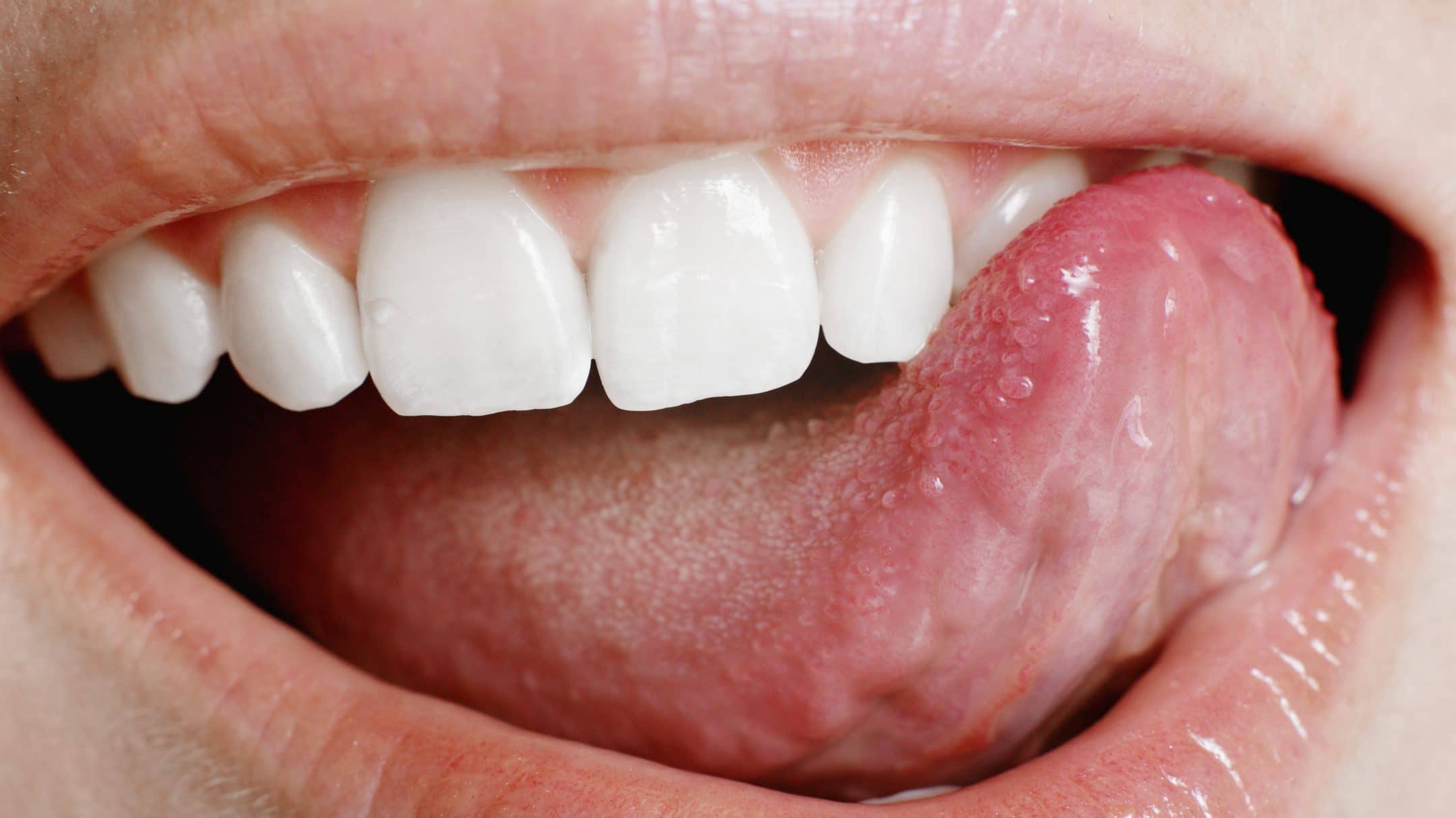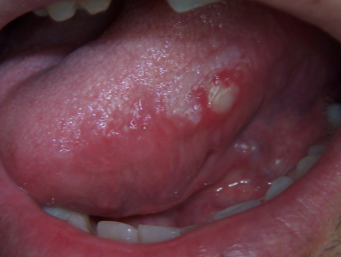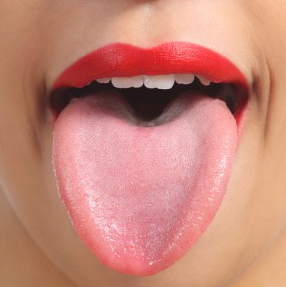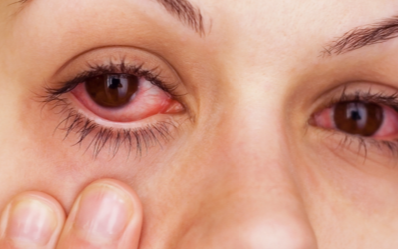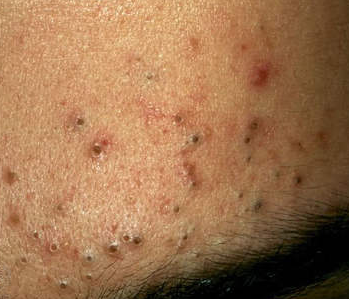Bumps that appear under the tongue can be due to numerous reasons which includes salivary stones, exostosis, canker sores, lie bump, swollen submandibular lymph nodes and even cancer. Each of the bumps from these causes above have more root causes that result for their formation.
When we look at the salivary stones, they are formed when there is changes in the flow of saliva through the gland. You are at more risk of a salivary stone if saliva is reduced or thickened. This result in the swelling and development of pain in the gland.
A canker sores may be formed under the tongue as well. The bump tend to appear one at a time and usually will result from a viral infection that targets mouth injuries, or from food allergies and stress as well.
On the other hand, a lie lump is linked to saying a lot of lies, but that is not scientifically proven. It is also linked to complications in the digestions in the stomach. When you try to correct the stomach problems, you may reduce this kind of bumps under tongue.
In the risky side, the bump in the mouth can be cancerous. The salivary gland cancers are very, making up to only 3 to 5% of all head and neck cancers, meaning they occur in about 1 to 3 people per 100,000. Most patients diagnosed with salivary gland cancer are 50 to 70 years of age.
Bump on Floor of Mouth under Tongue
It is natural and normal to be a bit worried when you develop a lump or bump on your body. If you or your child develops a soft swelling in the mouth, it may just be a mucocele, which is a harmless cyst. It is still a good idea to visit your doctor to check out the lump especially if it causes you pain and irritation.
Causes of mucocele
It is formed on a small salivary gland on the floor of the mouth under tongue, which makes saliva in the mouth.
Your saliva moves from the salivary gland through the ducts into the mouth. One of the ducts can become damaged or blocked. This most often happens if you repeatedly bite or suck on your lower lip or cheek. Once the duct is damaged, mucus seeps out, pools, becomes walled off, and causes a cyst- like swelling. A similar buildup may happen when the duct is blocked.
Clear Bump under Tongue
In several occasions, a clear bump that appear under the tongue is an obstructed salivary gland. Unless you see them often or it does not go away, it is not a major problem. If the lump is persistent and won’t go away, it is very much important if you visit your doctor.
What is the clear bump underneath of your tongue?
Sometimes taste buds can become irritated by spicy foods and some acids that are contained in foods we eat. Also there are times this could just be a canker sore. You could try to gargle salt water several times a day. It usually will take around 7 to 10 days for this to go away.
What are clear fluid filled bumps underneath tongue?
A clear lump that is not infected may have some clear fluids due to the presence of saliva in the mouth. When the infection occurs the clear bump under tongue may turn white and be filled with pus.
What causes painful bumps under your tongue?
Those lumps may be lie bumps as they call them. They are believed to be caused by someone telling a lot of lies. Though it is not scientifically been proven. If you have them try to stop telling lies and see if they may go away. To me this is funny. Instead of trying to pop it, do not do it as it may cause much problems.
White Bump under Tongue
A bump that may appear to be whitish under the tongue could be due an infection. When a lump that result from salivary stones or lie bump is not handled in the right way, it may result to more problems that may need you to take extra care activities to clear it.
If the lump is not treated earlier it may be affected hence this is visible by a small growth which is whiter at the top.
On the other hand, canker sores may be the cause of the white bump under tongue, as it is commonly known. These sores are also known as mouth ulcers.
Canker sores most commonly appear due to viral infection that can be caused by the growth of bacteria and other forms of viruses in the body. Incidentally, an overload of thrush on tongue or mouth can also be responsible for this because thrush causes an attack of bacteria and viruses.
Also another reason that can lead to the development and growth of canker sores is a deficiency of vitamins and other nutrients in the body.
Red Bump under Tongue
Red pimples under the tongue can be irritating. At some point they may appear as a result of eating too much of acidic or sugary foods and they can also be a sign of a disease. In most cases, the bumps are merely a nuisance. While they may be painful, they are likely to disappear on their own after a couple of days. It is very important to understand the cause of your bump under tongue before you visit a doctor.
Causes of Red Bumps Under the Tongue
In most cases, red spots underneath your tongue or anywhere in your mouth have usually been caused by irritation. You may have been eaten some sugary foods or drinks, salty or acidic, bumps may occur in your mouth. These red bumps are very tender to touch and may give someone hard time when chewing.
Exostosis
A bump under tongue may be exostosis. This appears when extra bone forms in the lower jaw and presses into the tender underside of the tongue. When you eat hard foods or crunchy ones and accidentally you poke this bump, it can be very painful and can get irritated. The bump may take some time to heal.
Canker
This is another common cause of red bump under tongue. These kind of bumps occurs one at a time and they may be a virus. The research shows that though mouth injuries, food allergies and stress may also be the cause, the red bump will likely have a yellow or white center, they are so painful and they usually take some time to disappear.
Treatment
To treat red bump under tongue you need to be very careful of your oral hygiene. Most likely brushing and flossing at least twice a day. To get rid of the pain from the bump, in most cases over-the-counter oral pain relief may help to sooth inflammation. Rinsing with warm saltwater will also help.
Prescription
If the red bump under tongue gets worse, or even last longer than a given time, or also it may end up bleeding and very painful such that you can’t eat, it is advisable to see your doctor for a checkup, he/she may prescribe a stronger oral gel to relief your pain.
Hard Bump under Tongue
Do you happen to have a hard lump below the bottom of your teeth under the gum, on the inside of the mouth under tongue? Well, it could be some serious on something that is not serious. This will only be known after you know what has caused the bump to form.
What does hard lump under tongue mean?
There are a few possibilities for the hard lump under the tongue which need to be ruled out and here are some of the few causes of those lumps:
It can be a swollen lymph node like a submandibular lymph node which can swell in the response to any oral infections.
Second possibility is a salivary gland swelling like submandibular gland infection or blockage of the salivary duct which lies beneath the mucous membrane of the floor of the mouth. The sublingual and sub maxillary glands empty into the mouth through ducts under the tongue.
The swelling of these glands due to the blockage of these ducts leads to interference of production and drainage of saliva and pain and irritation. It may be due to some obstruction like stone or tumor, inflammation and infection.
The third possibility is if any cyst or benign skin growth. You need to have a direct examination of the area by a dentist to confirm the diagnosis.
Note: It is important to let your doctor know any health issue you undergo, however much small the problem may look like.
Bump under Tongue no Pain
There are cases whereby you may develop a painless lump in your mouth under the tongue, and wonder where it came from. The lump may be big or small on the bottom inside the mouth, and appears like an eraser and it may stay there even for two weeks. This kind of bump under tongue should not be ignored if it don’t go away after a few days. It may be carrying more complications more than you can imagine.
What can this kind of painless lump be?
A limp under the tongue, behind the teeth can be a number of things. Some of them have no much problems and can go away on its own and other need medical attention to be removed. Here are the possibilities of the bump under tongue:
- Inclusion cyst – a harmless round mass in the mucosa of the mouth, much like a pimple in a different location. It is usually not so hard and can be tender if it is associated with infection.
- A salivary duct stone – may saliva glands open in this area, and their tubing courses through the bottom of your mouth. These kind of bumps are usually hard, with no problem not unless the salivary gland is swollen.
- A torus – it is a very common, not painful lump that emerge from the bone of the mandible in the mouth.
- A vascular mass – these usually occur in the blood vessels that are found under the tongue. The vessel may develop a lump may be due to blood clot, and the bump under tongue in this vessels is usually painless and harmless.
- A sialocele – this is a collection of saliva in the duct that can become enlarged and can get infected. These kind of lumps are usually softer and tenderer.
- An oral cancer – sound so scary! Any mass in the mouth has the potential to be a cancer lump. These is not common but these kind of bumps are usually irregular, non – rounded, hard, and non – tender. These are most common in people who smoke or chew tobacco.
Since can be such a new bump appearing on your body, may want to hydrate it well. Pay attention to it and if it persists beyond the week, you should visit your doctor who can make a possible diagnosis. If it remains hard, often these are surgically removed for biopsy.
You may require an ENT or oral surgeon to look at it more carefully, and your normal or primary doctor should see it first, and determine what needs to be carried out to clear the bump under tongue.
Bump on Salivary Gland under Tongue
Saliva constantly flows from the salivary glands in your mouth. In some cases, the chemicals in saliva can crystalize to form a tiny stone. The salivary gland stones commonly known as salivary calculi’ can become lodged in the duct leading from the salivary gland, blocking the flow of saliva into the mouth. This result to a swelling that occur with pain in the duct.
The stones are largely made of calcium, and most are smaller than 1 cm in diameter, although they can range from being less than 1mm to as large as a few cm.
Often, a procedure is needed for the stone to be removed, but it can sometimes come out of the mouth on its own, or after a bit of probing. You can try to dislodge the stone at home by sucking ao lemon juice to stimulate saliva flow.
Why a bump under tongue form in the salivary gland
It is not well known why salivary gland stones form. There is no imbalance of calcium anywhere else in the body.
The occurrence of the stone may be linked to changes in the flow of saliva through the gland. You are probably more at risk of one if saliva is reduced or thickened. For example, if you are dehydrated, or not eating much as eating stimulates a greater flow of saliva.
There are certain medication that may increase the risk of salivary stones formation.
Where does the salivary stones form
Most salivary gland stones form in one of the submandibular glands and each person normally have two of this glands on each side of the mandible under the bottom of the mouth.
The stone becomes lodged in the duct running from the submandibular gland under the tongue and appear like bump under tongue.
Saliva is also produced in the parotid glands just below and in front of your ears, and in the sublingual glands beneath the tongue, but it is much uncommon for stones to form in these glands.
How to identify a salivary gland stone
If the stone is very small and not blocking the duct, you may not realize you have it as there may not be any symptoms.
A larger stone may be seen when you open your mouth wide. If the stone is big enough to cause symptoms, these symptoms will usually continue until the stone falls out or is removed.
Symptoms of bump under tongue that forms in the salivary glands
If the stone is big enough and blocks the duct and stop some flow of saliva, you might have:
- Dull pain over the affected gland that comes and goes
- Swelling of the affected gland, which may flare up and down over time
- Infection of the gland – it will be very painful and an abscess may form which can make you feel unwell
- If the salivary duct is completely blocked, you may feel sudden, intense pain after you start eating at meal times. This is then followed by swelling, which eases during the time after eating. Swelling and pain occur because the saliva cannot exit the blocked duct, so it backs up and build up in the gland.
Diagnosis of salivary gland stones
A GP may be able to see the stone when they examine your mouth. Although, an X- ray is basically the best to show the stone. If the stone show up on the X –ray, you may need one of the following detailed scans:
- A computerized tomography scan- which uses X- rays and a computer to create detailed images of the inside of the head and neck.
- A magnetic resonance imaging scan- which uses strong magnetic fields and radio waves to produce detailed images.
- Solography- where a dye is injected into the gland before an x- ray is carried out.
- Sialendoscopy- where a thin tube with a tiny light and camera on its end is inserted into the duct, so that the doctor can see into the gland. If a stone is seen, this can be removed at the same time.
Salivary Stone removal
The stone may be removed where by your GP may try to free up the stone by probing your salivary duct with a thin, blunt instrument. If it does not work, a therapeutic sialendoscopy procedure may be carried out. A local anesthetic is given to numb the area, and a very thin endoscope is pushed in the duct. The instrument is then used to grab the stone and pull it out.
If the stone is large the doctor may need to break it down first, using shock wave treatment. This is called extracorporeal shock wave lithotripsy.
In the past, the doctors would remove the salivary stones by making a small incision in the mouth but such operation is rarely necessary in this days.
How to Get Rid of Bump under Tongue
A lump that appear under tongue may be removed very easily if you are aware of the cause that resulted to its formation. Getting rid of a bump under tongue is easy with the right kind of treatment as well care. So it is good to know what really caused the lump to appear in the first place, before administering the right treatment to clear it. However, every bump has its own way of treating it but the home remedies may work for almost all the bumps under tongue.
Some lumps have no treatment and even when you visit the doctor he/she may recommend for home remedies, as they may help clear the problem.
Home Remedies for Under Tongue Bumps
For a lie bump, if inflamed and causing pain, the best way to deal with it them is through cold compresses. You can get an ice cube and apply it directly on the affected area. This helps in soothing the bump under tongue. This will also numb the area for a while and eliminate pain for some time.
Before sleep, you can gargle a mixture of warm water and salt. This reduces the pain and also prevent the infection. If the bump is inflamed, it is possible that it may get infected. Gargling of salty water may be effective to prevent the chances of the bump under tongue from infection.
Chewing fresh mint leaves is also a great remedy for bumps in the mouth. You can chew the leaves some time before bed.
You can as well boil milk with a few figs in it. Drink the milk while still warm. This helps to clean your stomach completely, curing any kind of indigestion or other digestion problems that may cause the development of any bumps in the mouth caused by digestion problems.
For salivary stones, can try eating if your eating habit is poor, as eating stimulates greater flow of saliva, or if you are dehydrated, make sure you drink much water. These two things can be linked to the formation of salivary stones, though the main cause is not known. To be on the safe side, eat frequently and take inn enough water so that you are not dehydrated.
Some lumps so long as they are not popped to allow infection to take place, they can go away on their own. However, taking in cold fluids is one remedy that can help to cab itching. The temperature of the fluids helps to soothe the burning, itching and pain from the bump.

